Last updated: October 26, 2022
Article
Moving Goods by Rail - Steamtown Teaching with Museum Collections Lesson Plan
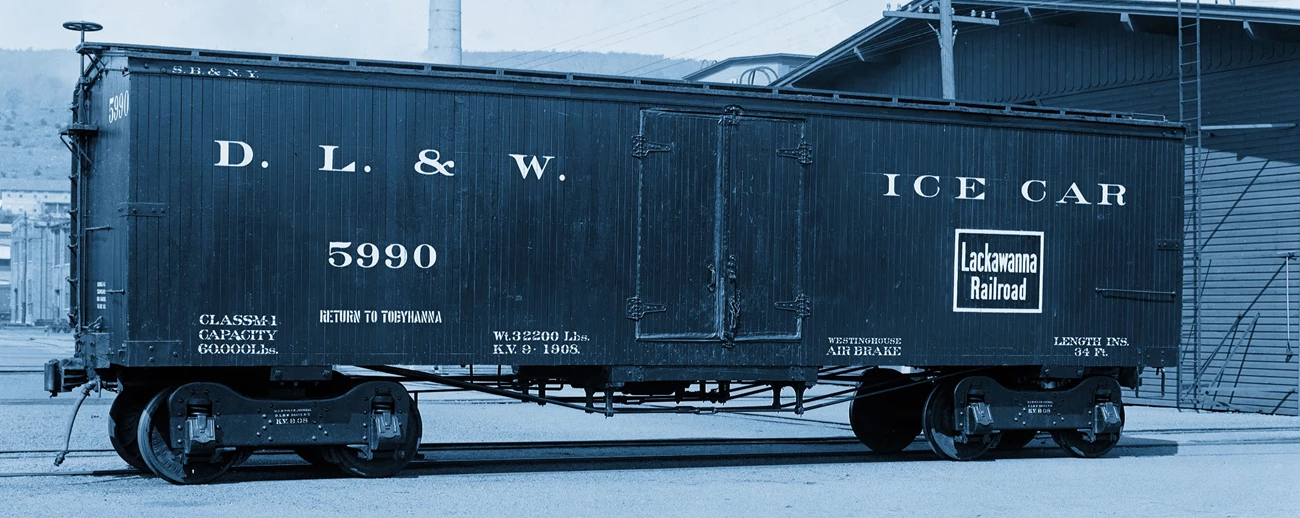
B258
A. Title: Moving Goods by Rail
- Developer: Museum Curator and Park Rangers, Steamtown National Historic Site
- Grade Level: 6 - 8
- Number of Sessions in the Lesson Unit Plan: Four individual activities, four small group activities
B. Overview
- Park Name: Steamtown National Historic Site
- Description: This unit introduces students to how innovations in nineteenth century American rail transportation made commodities more readily available
- Essential Question: How did railroads change the availability of goods such as milk, livestock, and grain, and how does early rail shipment compare with current practices?
C. Museum Collections and Resources
NPS Museum Object or Historic Photo
-
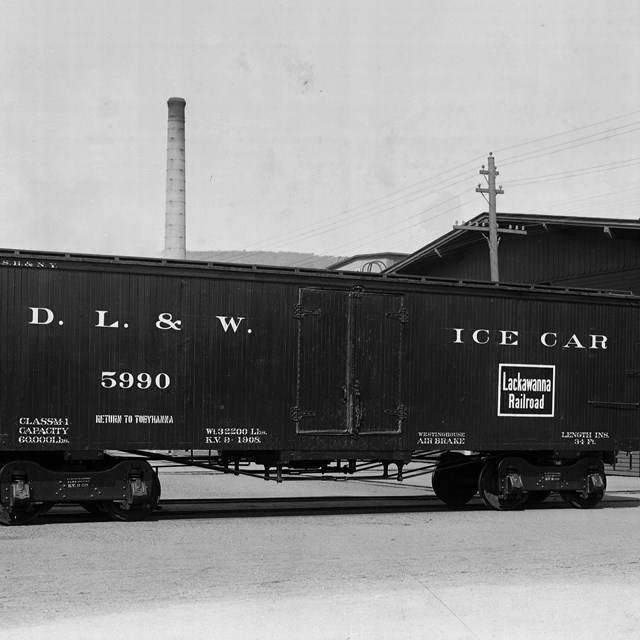 D. L. & W. Ice Car No. 5990
D. L. & W. Ice Car No. 5990Steamtown National Historic Site, STEA 7469 B258
-
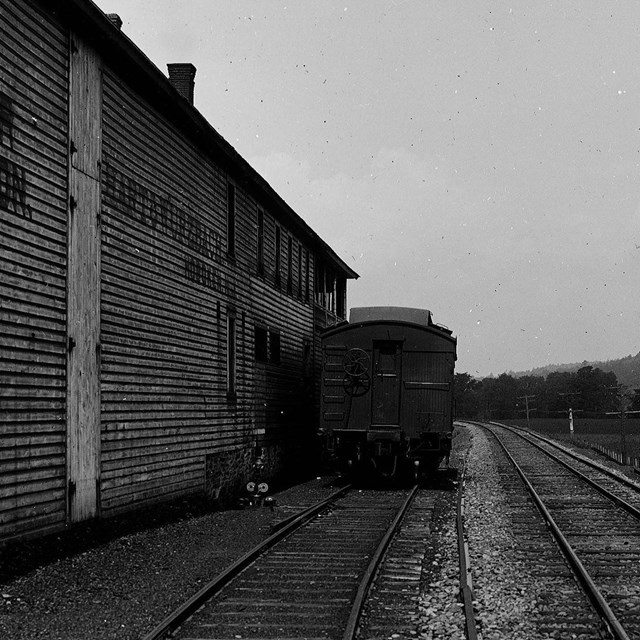 Barker Milk Station Itaska, New York
Barker Milk Station Itaska, New YorkSteamtown National Historic Site, STEA 7469 C3472
-
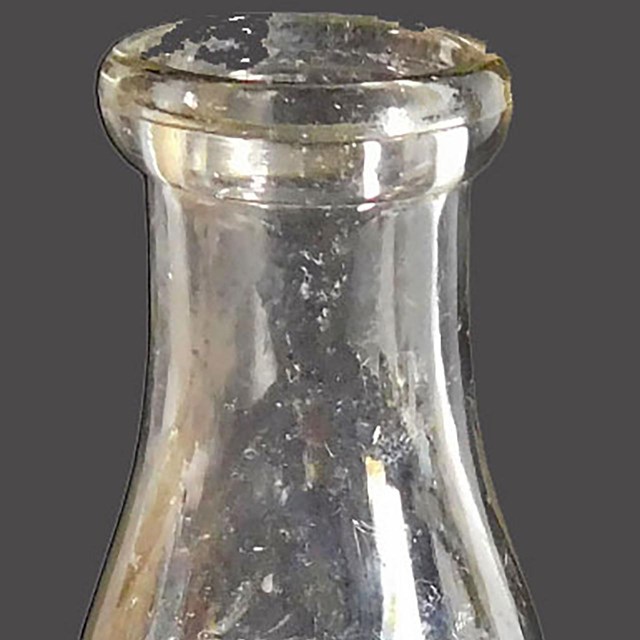 Milk Bottle
Milk BottleSteamtown National Historic Site, STEA 7494
-
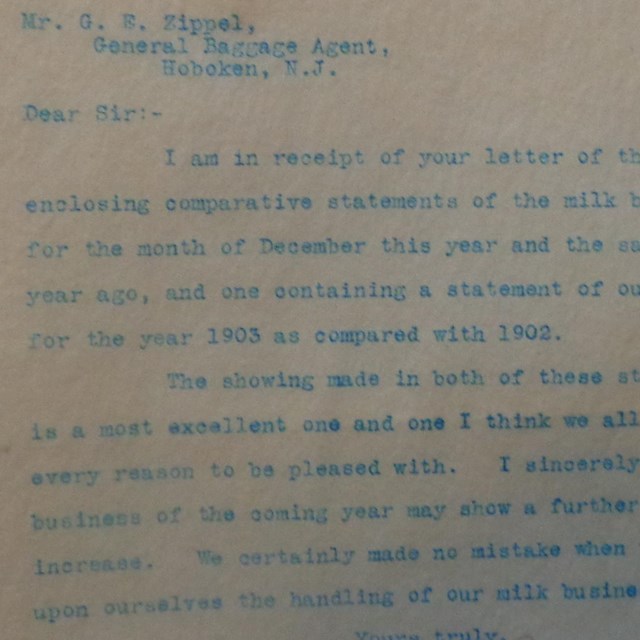 Letter
LetterSteamtown National Historic Site, STEA 7469
-
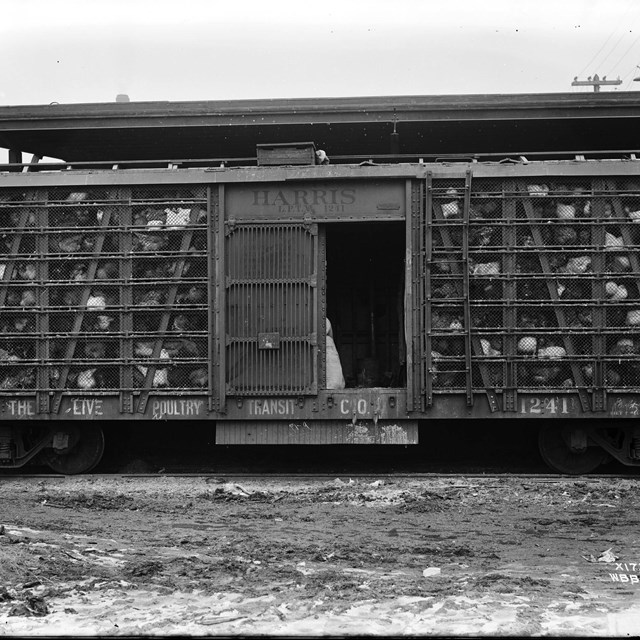 Live Poultry Transit Company Car No. 12
Live Poultry Transit Company Car No. 12Steamtown National Historic Site, STEA 7469 X1731
-
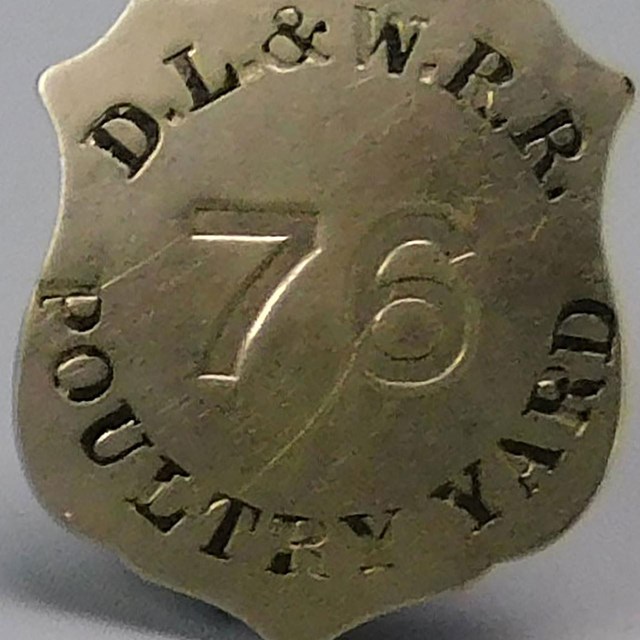 Railroad Police Badge
Railroad Police BadgeSteamtown National Historic Site, STEA 4754
-
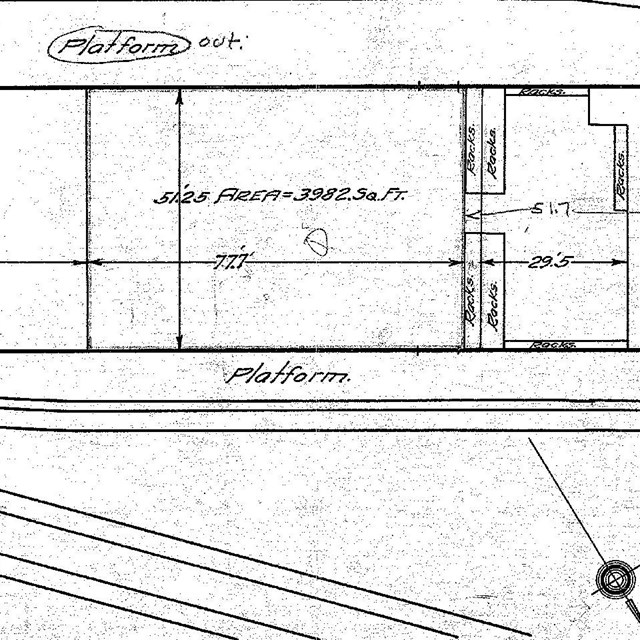 D. L. & W. Old Storehouse diagram
D. L. & W. Old Storehouse diagramSteamtown National Historic Site, STEA 7469
-
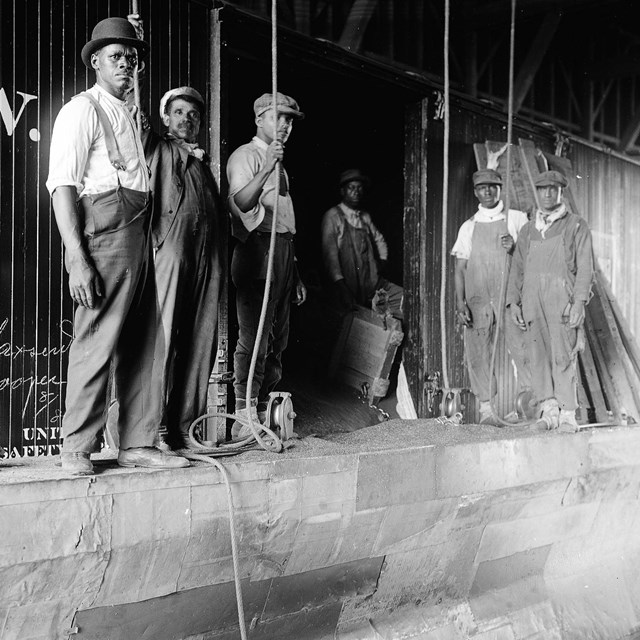 Laborers in front of grain boxcar
Laborers in front of grain boxcarSteamtown National Historic Site, STEA 7469 C4206
-
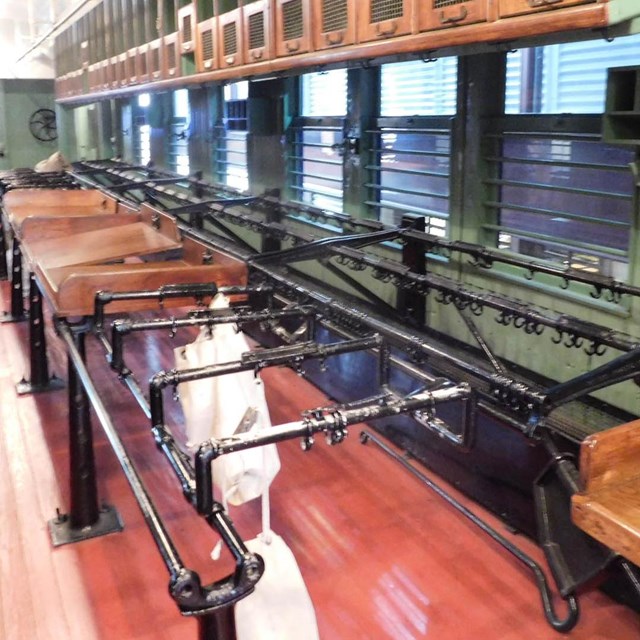 Louisville & Nashville Post Office Car
Louisville & Nashville Post Office CarNational Park Service photograph
-
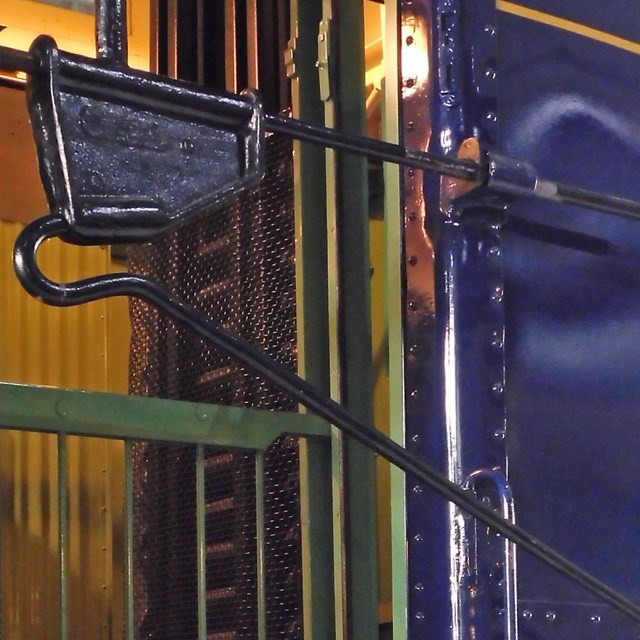 Mail Hook
Mail HookSteamtown National Historic Site, STEA 3292
-
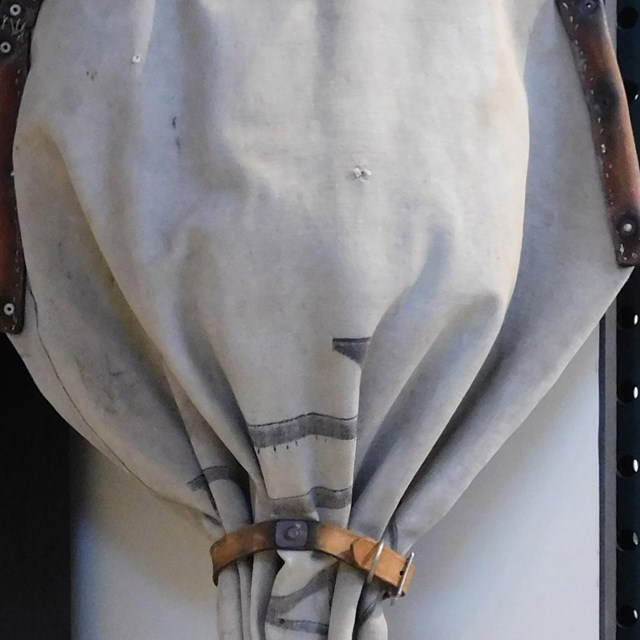 Mailbag
MailbagSteamtown National Historic Site, STEA 2861
-
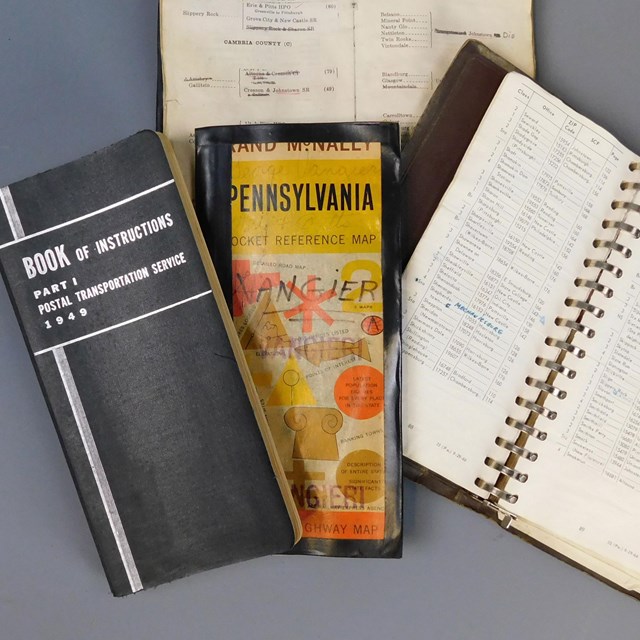 Vangieri Railway Post Office Collection
Vangieri Railway Post Office CollectionSteamtown National Historic Site, STEA 8146
NPS Resources
- All Aboard! People & Railroads at Steamtown National Historic Site Virtual Museum Exhibit, including multimedia features
- “How to Read an Object”
- “How to Read a Photograph”
- “Moving Goods by Rail”
- Steamtown park web site
- Steamtown NHS publications and brochures at http://npshistory.com/publications/stea/index.htm
- Search “Steamtown” on NPGallery.nps.gov
- California State Railroad Museum (californiarailroad.museum)
- National Railway Museum, York, England
- National Postal Museum
- The Association of American Railroads (AAR)
D. National Education Standard
NSS-USH.5-12.6 Era 6
The development of the industrial United States. Understands how the rise of corporations, heavy industry, and mechanized farming transformed the American people.
E. Student Learning Objectives
-
Students will determine how goods were shipped by rail; the challenges of shipping milk, poultry, and mail; and how these challenges were overcome.
-
Students will compare people’s lives before and after the development of the railroads.
-
Students will observe how railroads continue to play a crucial role in the shipping of goods.
F. Background and Historical Context:
Prior to the 1860s, Americans across the country led different lives depending on where they lived, if they traveled, as well as what goods were available to them. That all changed with the arrival of the railroad and its expansion throughout the country. Distance was no longer an insurmountable obstacle, and commodities became more readily available to more people.
Insulated and refrigerated train cars combined with the speed of trains meant that people in New York city no longer needed to keep cows in their back yard, as they could get milk from suppliers in upstate New York. Trains also provided prompt delivery of grain, poultry, cattle, and the United States mail.
The museum collection at Steamtown National Historic Site provides a glimpse of how a variety of commodities were shipped.
G. Vocabulary
- Boxcar- Railroad car that is enclosed and generally used to carry freight
- Codified- To be put into law by the government
- Commodity- A raw material or primary agricultural product that can be bought and sold
- Freight- Goods transported in bulk
- Ice bunker- Ice reservoirs at each end of an insulated and refrigerated car to cool the load
- Live poultry car- Car used to transport chickens, ducks, geese, turkeys
- Refrigerator car- Railroad rolling stock designed to carry perishable freight at specific low temperatures
- Rolling Stock- All vehicles, self-propelled or not, that operate on a railroad line. Includes both locomotives and cars designed to carry persons or freight (tank cars, boxcars, flatcars, passenger cars, etc.)
H. Educational Activities
Share images in this lesson plan and have students read the Moving Goods by Rail article, and take a look at the Steamtown virtual museum exhibit.
Individual Activities
-
Examine Rail Postal Car interior and note design elements and equipment. Then, select a regularly-purchased item owned or consumed, and design and draw a railroad car used to transport the item now or in the future.
-
Design and draw a badge worn by a contemporary railroad employee. (See Badge (STEA 4754)).
-
Read and analyze the letter (STEA 7469 Book 43) from the president of the Delaware, Lackawanna & Western railroad then write a similar letter of commendation to an “employee” using contemporary language.
-
Write a letter home as a mail clerk in a Railway Post Office (RPO) Car, poultry yard guard, or railyard stock pen overseer that describes a typical day at work.
Small Group Activities
- Develop and present a video newscast or PowerPoint with a written script and accompanying brochure on how milk, grain, livestock, poultry, or mail was first shipped by rail then and now. If presenting on mail, include information about how mail was processed.
- Complete the “How to Read An Object” chart for the Milk Bottle (STEA7494) and report back to class.
- Complete the “How to Read a Photograph” chart for Grain Car (STEA 7494 C4026) and report back to class.
- Create a storybook on the transportation of milk, live animals, or mail suitable for elementary school children. Each group presents their storybook to the class.
